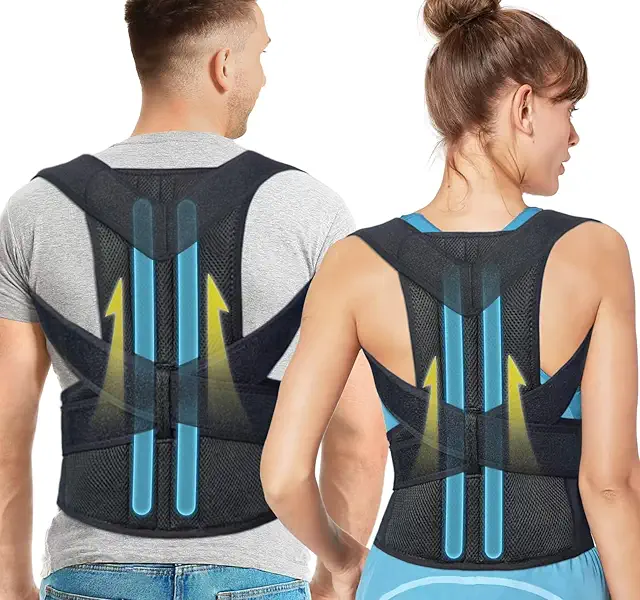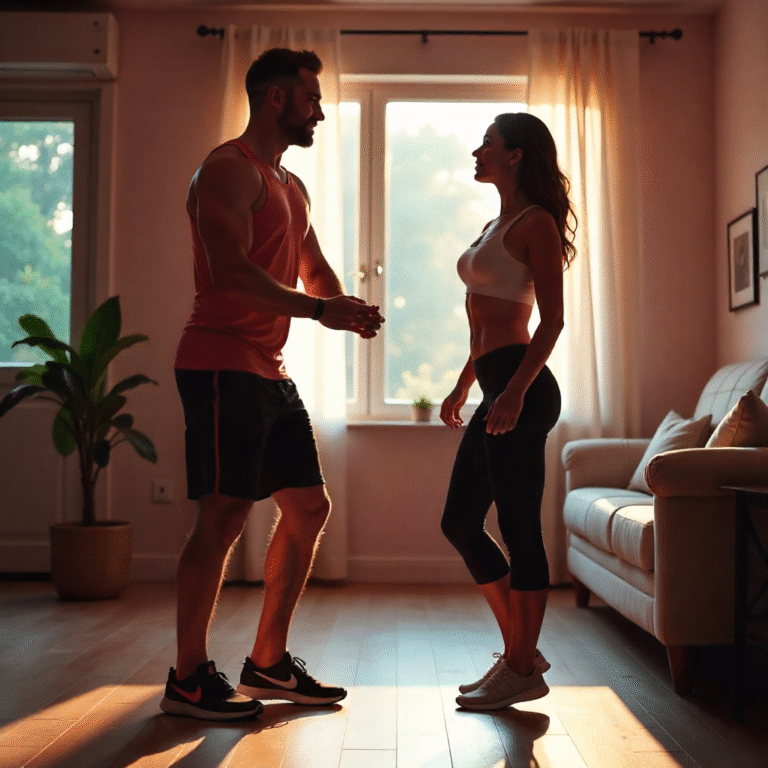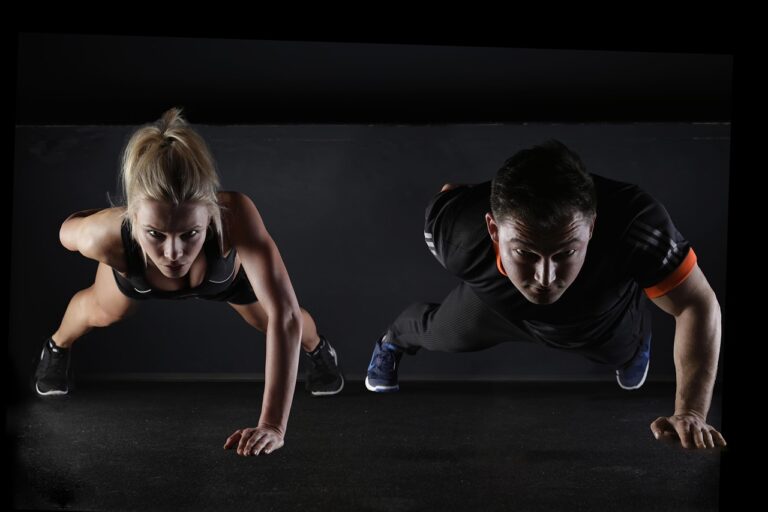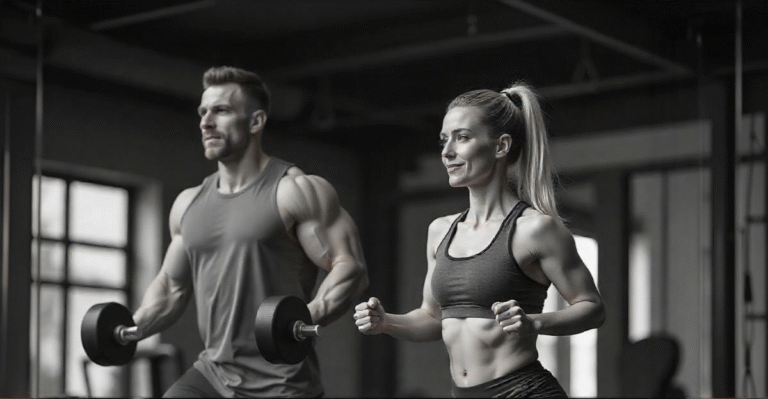Unleashing the Power of the Posture Corrector: Your Blueprint for a Straighter, Stronger You!
Alright, listen up, because if you’re reading this, chances are you’ve felt that nagging ache in your neck, the persistent tension in your shoulders, or that all-too-familiar slouch creeping into your daily routine.
We’ve all been there. In today’s world, with more screen time and sedentary jobs than ever, posture corrector devices aren’t just a niche product; they’re becoming a vital tool in the quest for better health and well-being.
I have seen many people change their appearance and boost their confidence. I can say that knowing how to use this can make a difference.
This isn’t about a quick fix; it’s about a powerful aid in retraining your body for lasting results.
What Exactly Is a Posture Corrector, and Why Should You Care?
Let’s cut to the chase. It is a wearable device designed to gently guide and remind your body to maintain proper alignment.
It’s not a rigid cast that forces you into position, but rather a subtle yet effective tool that helps to retrain your muscles and build “muscle memory” for a healthier posture. Think of it like this: your body, in its incredible wisdom, adapts to the positions you hold most frequently.
If you’re constantly hunched over a laptop or phone, your muscles and connective tissues will shorten and weaken in ways that perpetuate that poor posture. A posture setter acts as an external cue, signaling your body to pull your shoulders back, straighten your spine, and engage your core.
Why should you care? Good posture isn’t just about looking taller or more confident (though it certainly does that!). It’s fundamental to your overall physical health. Poor posture contributes to:
- Chronic back, neck, and shoulder pain: This is perhaps the most immediate and common complaint. When your spine is out of alignment, certain muscles become overstretched and weak, while others become tight and overused, leading to pain and discomfort.
- Headaches: Often, tension headaches can originate from poor posture, particularly “tech neck,” where the head is constantly tilted forward.
- Reduced lung capacity: Slouching compresses your lungs, making it harder to breathe deeply and efficiently.
- Digestive issues: A hunched posture can put pressure on internal organs, potentially impacting digestion.
- Fatigue: When your muscles are constantly inefficiently fighting against gravity, it expends more energy, leading to fatigue.
- Decreased confidence: Let’s be real, how you carry yourself impacts how you feel and how others perceive you.
The market for posture correction is booming, projected to reach USD 1.24 billion in 2024 and grow significantly, highlighting the widespread need for these solutions. People are actively seeking ways to combat the effects of sedentary lifestyles, and they are a key part of that solution.
The Science Behind the Straight: How Posture Correctors Actually Work
It’s not hocus pocus; there’s a legitimate physiological process at play. It primarily works by providing proprioceptive feedback and gentle physical support.

- Proprioceptive Feedback: This is the most crucial element. Proprioception is your body’s sense of its position and movement. When you wear a posture Setter, it creates a mild resistance or tension when you start to slouch. This immediate, subtle feedback makes you aware of your posture in real-time, something many of us lack during our busy days. This heightened awareness is the first step to change.
- Muscle Memory Training: By consistently providing this feedback and gently encouraging correct alignment, the corrector helps to retrain your muscles. Over time, your muscles learn and remember what the “correct” posture feels like. This builds muscle memory, so eventually, you’ll naturally adopt a better posture even without the device.
- Support and Relief: For those experiencing pain or muscle fatigue due to poor posture, the physical support offered by a posture Setter can provide immediate relief. It helps to take some of the strain off overworked muscles, allowing them to relax and recover.
Important Note: Posture setters are training wheels, not a permanent crutch. They are most effective when used as part of a holistic approach that includes targeted exercises, stretches, and ergonomic adjustments. Relying on them 24/7 can weaken your postural muscles. Think of it as a mentor, not a master.
Types of Posture Correctors: Finding Your Perfect Match
Just like no two people are exactly alike, neither are all posture issues. That’s why the market offers a range of posture setter types, each designed to address specific needs and comfort levels. Choosing the right one is crucial for effectiveness and consistency of use.
Table: Common Types
| Type of Posture- Corrector | Description | Pros | Cons | Best For… |
| Upper Back Braces | Often harness-like, focusing on pulling shoulders back. | Excellent for rounded shoulders & upper back slouching. | Can be bulky under clothes; may cause underarm discomfort. | Desk workers, those with pronounced shoulder slouch. |
| Full Back Braces | Extend from shoulders to lower back, offering comprehensive support. | Addresses both upper and lower back alignment. | Less discreet; potentially more restrictive. | More severe posture issues, general spinal support. |
| Posture Shirts | Garments with integrated support panels and compression. | Discreet, comfortable for extended wear, can be worn under clothing. | Non-restrictive, provides real-time feedback, and app integration. | Mild slouching, daily wear, and active individuals. |
| Electronic Reminders | Small, wearable devices that vibrate when you slouch. | Non-restrictive, provides real-time feedback, app integration. | No physical support; relies entirely on self-correction. | Building posture awareness, subtle reminders. |
| Clavicle Braces | Designed specifically to support and align the collarbone. | Excellent for clavicle fractures or specific shoulder alignment. | Targeted, not for general posture correction. | Post-injury recovery, specific shoulder issues. |
“Do Posture Setters Work?” Separating Fact from Fiction
This is the million-dollar question, right? Do they work? The answer, nuanced as it is, is yes, when used correctly and in conjunction with other healthy habits.
Here’s what the evidence and expert consensus suggest:
- Awareness is Key: Studies show that posture setters are highly effective at increasing bodily awareness. Many users report immediately feeling when they start to slouch, making them more mindful throughout the day. This alone is a massive win.
- Short-Term Benefits: For reducing neck and shoulder pain and improving alignment in the short term, they can be very beneficial, often within a few weeks of regular use. They provide that immediate relief and structural guidance.
- Limitations: They are not a magic bullet for deeply ingrained postural problems or severe spinal conditions. They don’t strengthen muscles on their own; they remind you to use them. Over-reliance can lead to muscle dependency.
- The “Comprehensive Approach” Principle: Medical professionals consistently emphasize that posture setters work best as part of a complete treatment plan. This plan should include:
- Targeted Exercises: Strengthening core, back, and shoulder muscles (e.g., yoga, Pilates, resistance training).
- Stretching: Improving flexibility in tight areas like the chest and hips.
- Ergonomic Adjustments: Optimizing your workspace, chair, and computer setup.
- Mindfulness: Regularly checking in with your posture throughout the day.
Statistic: A significant portion of computer users (50-70%) experience neck and shoulder problems, highlighting the widespread need for interventions like posture-correctors in modern society. While research continues to evolve, the consensus is that these devices serve as excellent “reminders” for better posture, supporting active efforts.
“Posture Corrector Before and After”: What to Expect on Your Journey
When people search for “posture setter before and after,” they’re looking for tangible proof, a visual representation of change. While individual results vary, here’s a realistic expectation of the transformation you might experience:
Before:
- Visual: Rounded shoulders, forward head posture, slouched upper back (thoracic kyphosis).
- Physical: Chronic aches in the neck, upper back, and shoulders; tension headaches; feeling generally “heavy” or tired; limited range of motion.
- Mental/Emotional: Lower confidence, feeling less energetic, perhaps perceived as less assertive.
After (with consistent use and supporting habits):
- Visual: Shoulders naturally pulled back and down, head aligned over the spine, elongated appearance. You’ll look taller and more open.
- Physical: Significant reduction or elimination of pain, improved breathing, increased energy levels, better muscle activation, enhanced athletic performance.
- Mental/Emotional: Boost in confidence, feeling more poised and present, improved mood.
It’s a gradual process. You won’t wake up transformed overnight, but with consistent dedication, the changes can be profound. The “before and after” isn’t just about how you look; it’s about how you feel and how your body functions.
Choosing the Best Posture-Corrector: A Practical Guide
So, you’re ready to invest in a posture-corrector? Smart move. But don’t just grab the first one you see. Here’s how to choose the best one for your needs, leveraging that hard-earned market experience:
- Identify Your Core Problem Area: Are your shoulders the primary issue? Is it overall slouching? Lower back pain? This dictates the type of corrector you need (e.g., upper back brace vs. full back brace vs. posture shirt).
- Prioritize Comfort and Adjustability: This is non-negotiable. If it’s uncomfortable, you won’t wear it. Look for:
- Breathable materials: Especially if wearing under clothes. Neoprene and breathable mesh are common choices.
- Adjustable straps/fastenings: To ensure a snug but not overly restrictive fit. One size rarely fits all perfectly.
- Padding: Around the armpits or other contact points to prevent chafing.
- Consider Wearability and Discretion: Do you plan to wear it under clothing daily? A posture shirt or a more minimalist upper back corrector might be best. If you’re primarily using it at home for targeted sessions, a more robust brace could be an option.
- Read Reviews and Consult Professionals:
- User reviews: Look for common themes regarding comfort, durability, and effectiveness. Pay attention to reviews from people with similar body types or needs.
- Medical advice: If you have severe pain, a pre-existing medical condition (like scoliosis, herniated disc, or osteoporosis), or are recovering from surgery, always consult a doctor or physical therapist before using it. They can guide you to the safest and most effective solution.
- Start Slow, Be Consistent: Regardless of the posture setter you choose, introduce it gradually. Start with 15-30 minutes a day and slowly increase wear time as your body adapts, usually up to 1-2 hours daily. Consistency is more important than duration.
FAQs: Your Burning Questions About Posture-Correctors, Answered!
Here are some of the most common questions people have when exploring the world of posture correctors:
Q1: How long should I wear a posture corrector each day?
A: Most experts recommend starting with 15-30 minutes a day and gradually increasing to 1-2 hours per day. Wearing it for too long can lead to muscle dependency. The goal is to retrain your muscles, not replace their function.
Q2: Can a posture corrector permanently fix my posture?
A: A posture corrector alone cannot permanently fix posture. It’s a tool to build awareness and encourage better habits. Permanent improvement comes from consistent use alongside targeted exercises, stretching, and maintaining ergonomic principles in your daily life. It’s about empowering your body to hold the correct posture on its own.
Q3: Are posture correctors safe?
A: Yes, posture correctors are generally safe when used properly. However, if used incorrectly (e.g., too tight, worn for excessive periods), they can cause discomfort, skin irritation, or potentially weaken muscles. Always follow manufacturer guidelines and consult a healthcare professional if you have underlying conditions or experience significant pain.
Q4: Can I wear a posture corrector while exercising?
A: It depends on the type of exercise and the corrector. Some lightweight posture shirts are designed for active wear and can help reinforce good form during workouts. More restrictive braces might hinder movement. Listen to your body and avoid anything that restricts natural movement or causes pain during exercise.
Q5: Will a posture corrector help with lower back pain?
A: While many posture correctors primarily target the upper back and shoulders, improving upper body alignment can indirectly alleviate lower back pain by reducing overall spinal stress. For primary lower back pain, you might consider specific lumbar support belts or full back braces, or consult a physical therapist for targeted exercises.
Q6: How do I clean my posture corrector?
A: Most posture correctors can be hand-washed with mild soap and air-dried. Always check the specific care instructions provided by the manufacturer to ensure longevity and hygiene.
The Path Forward: Embracing a Posture-Perfect Future
The journey to better posture is an investment in your long-term health and confidence. A posture corrector isn’t a silver bullet, but it’s a powerful ally.
It’s about providing your body with the gentle nudge it needs, the reminder to stand tall, and the framework to build lasting muscle memory. Combine this tool with a commitment to movement, strength, and mindful awareness, and you’ll not only look better, but you’ll feel better, move better, and unlock a whole new level of physical freedom.
Don’t let gravity win; empower your spine and stand strong!






